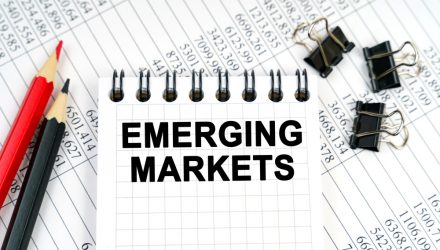The expectation of lower interest rates could continue to push the dollar lower, bringing emerging markets (EM) investors back to the space. This should bring additional growth factors into EM, making them even more attractive.
That said, all eyes will remain fixed on the Federal Reserve. And that’s specifically regarding how it continues to tailor monetary policy to fit the macroeconomic environment. As Institutional Asset Manager noted, if the Fed is successful in guiding the U.S. economy to a soft landing and stave off a recession, it could prove beneficial to emerging markets in the form of increased manufacturing.
“We are becoming increasingly excited by the prospects for emerging markets in 2024,” said Charles Jillings, portfolio manager of Utilico Emerging Markets Trust. “Whilst some emerging market countries have already marginally reduced interest rates, further cuts are likely to come in 2024 as real rates in the majority of emerging markets are now typically positive, inflationary pressures are under control and these markets are becoming more robust to external shocks.”
“With falling inflation and a weaker US dollar, emerging markets should be in a position to take full advantage of the global upswing in manufacturing activity that is anticipated to happen later in 2024 and into 2025,” he added.
Get Emerging Markets and ESG Exposure
There are a number of ways to get exposure to EM given its future upside. But investors may also want a more discerning screener that incorporates an ESG component. That said, they can consider using the Avantis Responsible Emerging Markets Equity ETF (AVSE).
AVSE draws from over 2,300 equities, making it deeply diversified. One notable feature of AVSE is its focus on value by looking at a company’s future profitability prospects relative to its price.
The fund “invests in a broad set of companies of all market capitalizations across emerging market countries and is designed to increase expected returns by overweighting securities believed to be trading at lower valuations with higher profitability ratios,” according to its product website. Furthermore, it adds another layer to screen out companies that comply with its ESG focus.
It “[l]imits the investable universe of companies by screening out those that raise concerns based on the team’s evaluation of multiple Environmental, Social and Governance (ESG) metrics and pursues the benefits associated with indexing but with the ability to add value by making investment decisions using information based on proprietary evaluations,” the product website added.
Additionally, its cost effectiveness is apparent in its 0.33% expense ratio. As such, in current times, where inflation is high and cost effectiveness is top-of-mind, AVSE is an ideal solution.
For more news, information, and analysis, visit the Core Strategies Channel.


